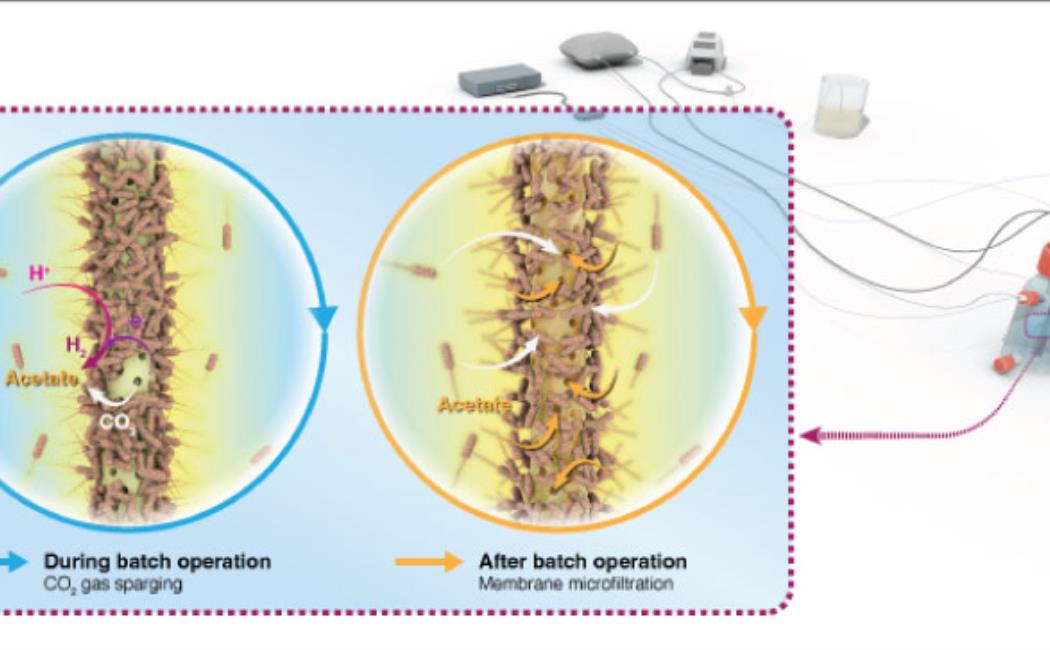
Membranes help multiply microbial CO2 munching
20 September, 2022
Microporous conductive membranes developed at KAUST are expected to help shape the future of microbial electrosynthesis for CO2 conversion technologies. The membranes simultaneously stimulate the growth of CO2-eating microbes and aid separation of the biochemical products.
Microbial electrosynthesis is a promising strategy to reduce the human carbon footprint. It uses specific living microbes to transform CO2 into useful chemicals in an electrochemical cell via a reduction reaction under applied voltage. With the reduction of CO2, the microbes multiply to form a biofilm on the cathode of the cell, but their growth involves a tedious multistep enrichment process that takes more than 30 days.
This enrichment process is a major bottleneck for achieving industrially attractive biochemical production and CO2 bioconversion. A further drain is the complex and energy intensive techniques deployed to isolate the products, which mainly consist of acetate.
Click here to read the full story.
Image: Illustration of the microbial electrosynthesis process whereby living microbes transform carbon dioxide into useful chemicals in an electrochemical cell via a reduction reaction under applied voltage.
© 2022 KAUST; Heno Hwang